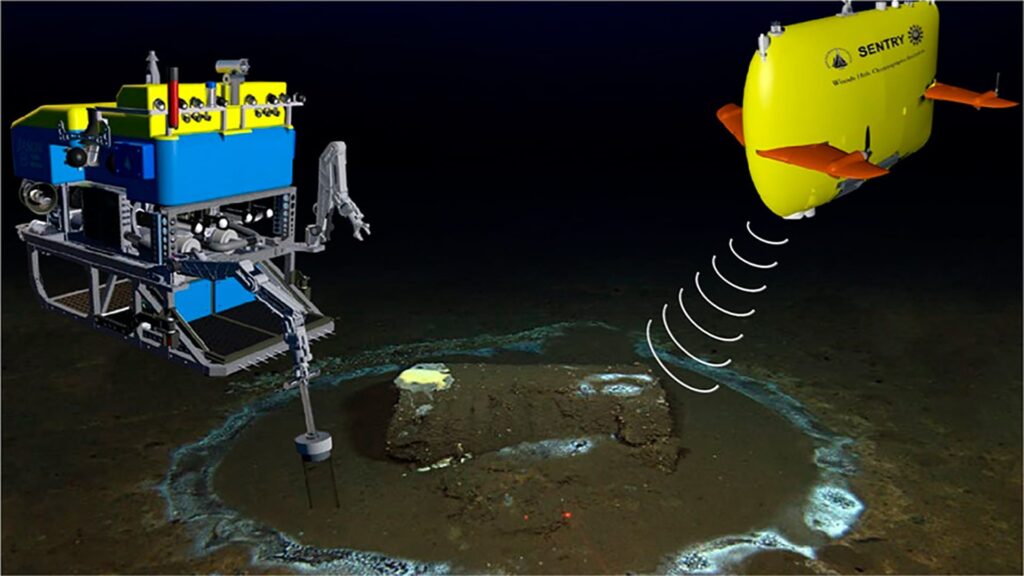
1. Toxic Depths: The Shocking Discovery of DDT and Radioactive Waste in the Pacific
The Los Angeles County coastline, famed for its picturesque beaches and scenic views, hides a darker legacy beneath its waves—an extensive history of industrial waste dumping now coming to light. In 2020, scientists from UC Santa Barbara, employing deep-sea robotics, uncovered a disturbing underwater site near Santa Catalina Island: a vast seabed littered with leaking barrels.
High concentrations of DDT, a pesticide banned half a century ago, were discovered near these barrels, indicating a significant underwater dump site. Historical records revealed that from the 1940s to the 1960s, it was common practice for local entities to dispose of hazardous materials, including low-level radioactive waste, directly into the ocean, a revelation brought to light in a recent study published in Environmental Science & Technology.
The environmental ramifications of these findings are profound. DDT contamination, more pervasive than previously recognized, poses a severe threat to marine life and possibly human health, overshadowing even the concerns around the discovered radioactive waste. The affected area, with high DDT levels, spans a region larger than San Francisco, with the pesticide’s presence detected throughout the marine food chain, impacting species from California sea lions to critically endangered condors.
This alarming situation has spurred increased research efforts, fueled by federal and state funding, to gauge the full extent of the risk posed by DDT and other hazardous materials dumped in the ocean, revealing a broader issue of historical pollution and its lasting impacts on the environment.
Thank you for your generous gift that will help us continue the production of this weekly, free publication

2. The Secrets of the Shark Fin Trade in Singapore
Singapore: Long hailed as a delicacy, shark fins have woven themselves into the cultural fabric of celebratory feasts and health tonics in many Asian regions, like Singapore. The fins are frequently exported in dried forms and marketed using generic terms such as “shark fin” or “dried seafood,” rather than specifying the species of origin. This lack of specificity in labeling creates challenges for enforcing and monitoring the trade, as it can be ambiguous or intentionally vague.
Despite growing awareness of the need for shark conservation, the consumption of shark fin products remains rampant in Asia, contributing to a staggering USD 1 billion industry. The slow growth rates, late sexual maturity, and low reproductive output of sharks make them uniquely vulnerable to overfishing, disrupting entire marine ecosystems and triggering trophic cascades.
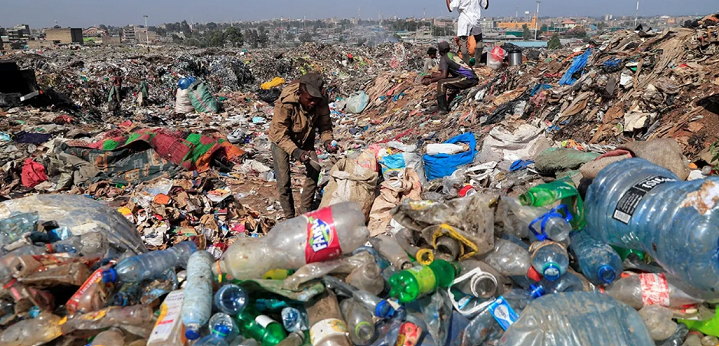
3. The Call for a Legally Binding Treaty to Combat Global Plastic Pollution
The fight against plastic pollution intensifies as global stakeholders call for a legally binding treaty. Recent discussions by the Public Accounts Committee have shone a spotlight on the inefficiencies plaguing efforts to combat this crisis. The United Nations Environmental Assembly (UNEA) countries converged on the issue of marine waste and plastic pollution, laying the groundwork for what many hope will evolve into a substantial, binding agreement.
As the UN inches closer to finalizing negotiations for a new plastic pollution treaty, the stakes could not be higher. The vision for this treaty transcends mere reduction in plastic production; it envisions a holistic strategy that embraces local initiatives for recycling, reuse, and sustainable transformation of waste. With projections suggesting that the ocean could contain more plastics than fish by 2050, the imperative for concerted global and local action is undeniable. The treaty represents a beacon of hope.
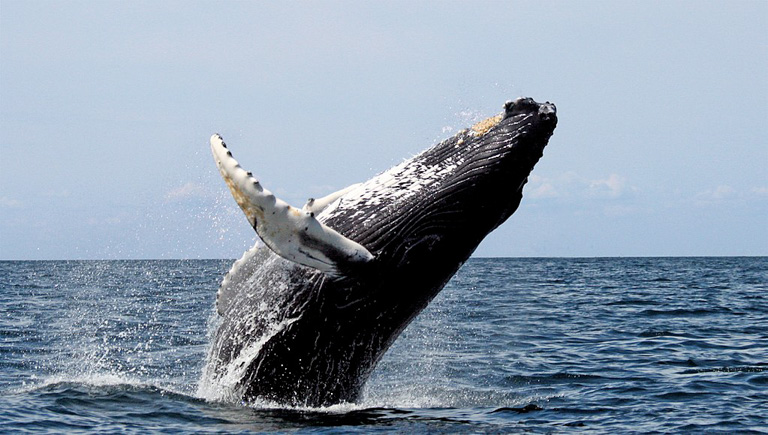
4. UN Report on the State of the World’s Migratory Species
Uzbekistan, the 14th meeting of the Conference of the Parties (CoP14) of the Convention on Migratory Species of Wild Animals ended with the adoption of a set of stronger measures for the conservation of migratory species. According to the report, of the billions of animals that make migratory journeys across land, rivers, and oceans, from giant humpback whales to reptiles and even insects, 44% of them are in decline. The Convention has been particularly successful in getting its priorities into the Kunming-Montreal Global Biodiversity Framework.
The COP saw the adoption of a resolution on Important Shark and Ray Areas. Parties agreed to improve information, management, and conservation efforts for the Blue shark, the most commonly caught shark species globally, and an Action plan for the critically endangered Mediterranean Angelshark. The CoP also adopted a mandate to address the impacts of deep-seabed mineral exploitation on migratory species.
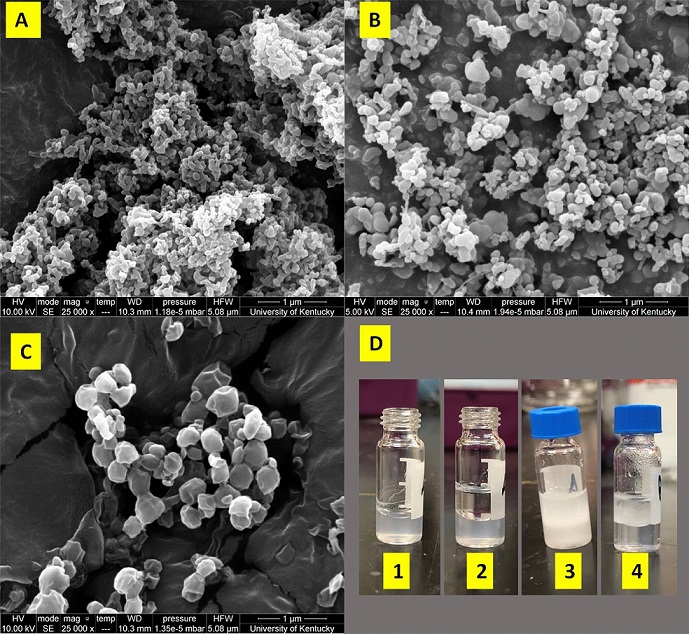
5. Are You Concerned About Ingesting Micro and Nano Plastic Particles? Green Solvent Mediated Extraction Might Be the Answer!
Do you have an inquiring, scientific mind? This article is for you!
The production of plastic and the amount of waste plastic that enters oceans increases every year. Synthetic plastics gradually break down into particles on the micro- and nano-scale in the environment. The micro- and nano-plastics pose a significant ecological threat by transporting toxic chemicals and causing inflammation and cellular damage when ingested; however, removal of those particles from water is challenging using conventional separation methods.
Deep eutectic solvents (DES), a new class of solvents composed of hydrogen bond donors and acceptors, have been proposed as a cheaper alternative to ionic liquids. Hydrophobic DES derived from natural compounds (NADES) show promise as extractants in liquid–liquid extractions. This study demonstrates the potential of hydrophobic NADES as extractants for the removal of different micro- and nano-plastic particles from aqueous solutions.
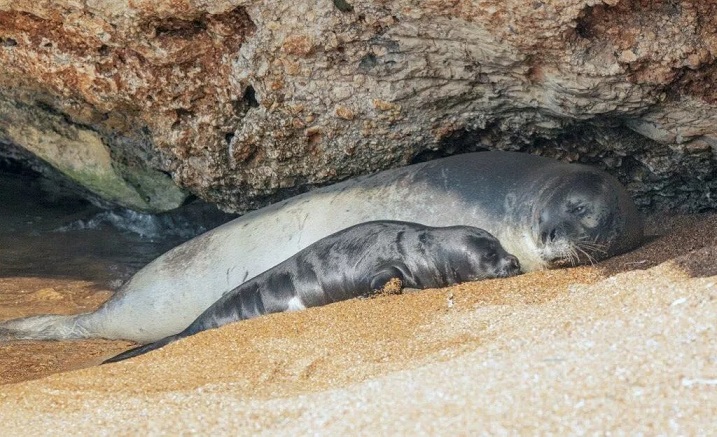
6. Cyprus’ Seal Population Growing as Two Births Recorded
Republic of Cyprus: The Mediterranean monk seal, Europe’s rarest marine mammal and one of the rarest globally has established a permanent breeding presence in Cyprus after decades of absence. The Ministry of Agriculture, Rural Development and Environment expressed satisfaction as the breeding season of 2023 witnessed the addition of two more monk seals to Cyprus’s shores, bringing the total population to an estimated 22 individuals, a significant increase from the 12 recorded a few years ago.
This breeding success is deemed crucial for the species’ survival in Cyprus and highlights the effectiveness of local nature protection and management initiatives. The Cyprus Mediterranean Monk Seal Monitoring Team has documented all the species’ refuge locations along the island’s free areas’ coastlines. Thanks to advanced monitoring equipment, surveillance is conducted around the clock, with one refuge even enabling real-time observation.
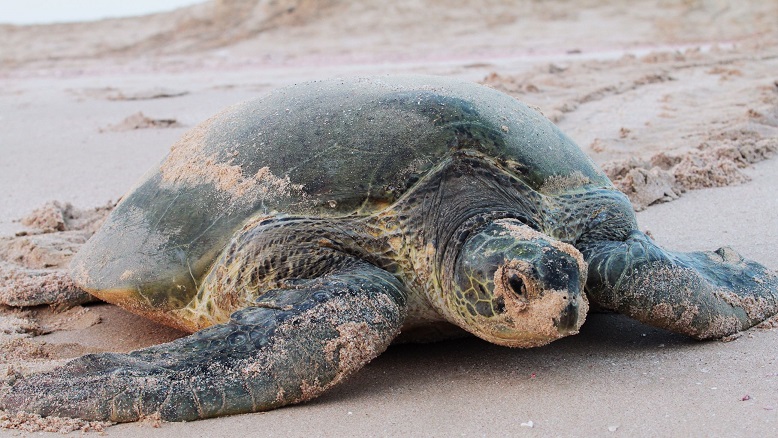
7. Abu Dhabi Records It’s First Rare Green Turtle Nest
Abu Dhabi, UAE: During its annual turtle survey, part of the marine assessment and conservation programme, the Environment Agency Abu Dhabi recorded the first nest of ‘green turtles’ at one of the core Hawksbill turtle nesting sites in Al Dhafra Region. Green turtles are found extensively in Abu Dhabi’s waters, but nesting activity has never been reported. Abu Dhabi offshore islands are known Hawksbill turtle nesting sites, this discovery is considered an aberration and will be added to the sporadic records of Green turtle nesting behavior in the UAE and countries along the Arabian Gulf.
Seven marine turtle species are found worldwide. Four can be spotted in Abu Dhabi’s waters, with a total population of 6,000 individuals, two of which, the Hawksbill and Green turtle are predominantly found here, with two other species, the Loggerhead and the Olive Ridley turtle considered occasional visitors.
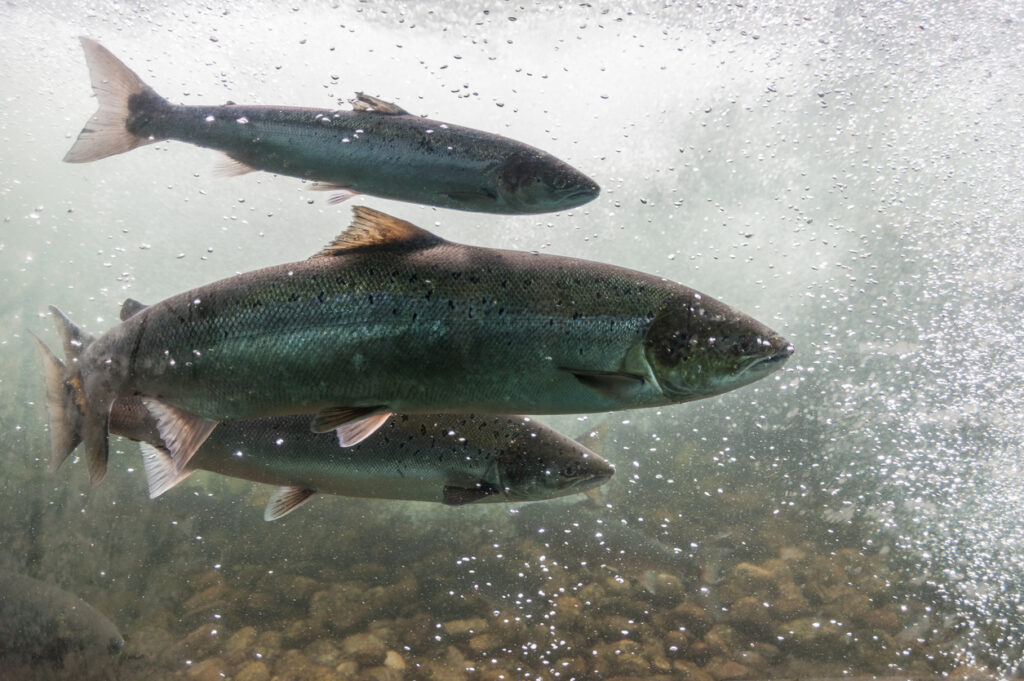
8. Fury as Fish Farm Pesticide Pollution Rises 72% in a Year
A toxic pesticide, Formaldehyde, that causes cancer was used by fish farms nearly 200 times over three years, despite fears the chemical could harm the marine environment and endanger human health. The UK government classified formaldehyde as a carcinogen in 2016 which means there are restrictions on its use, but it is permitted for use by the caged salmon industry.
The Scottish Environmental Protection Agency revealed there was an “accidental overdose” of formalin at Mowi’s Glenfinnan salmon farm at Loch Shiel in October 2017. This was “due to human error” leading to 1,343 dead fish. The Soil Association, which grants organic status to fish farms, said formalin may be used twice per year maximum under the direction of a farm’s contracted vet. According to Sepa, uncontrolled releases of formaldehyde had “the potential to cause significant harm” to the environment.
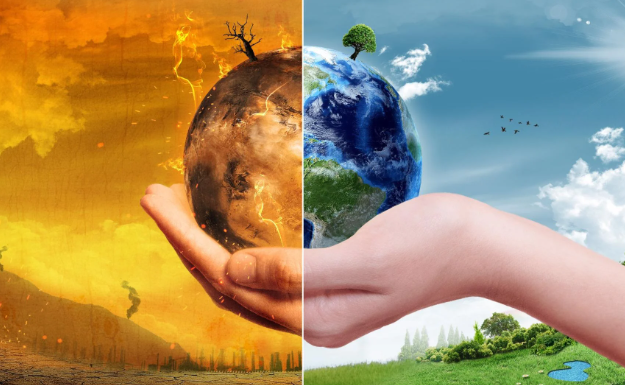
9. Wall Street Giants Like JPMorgan and Pimco Are Walking Back Their Environmental Pledges After Years of Outspoken Support for Fighting Climate Change
New York: Large financial institutions including investment bank JPMorgan, asset manager State Street, and investment management firm Pimco have pulled out of Climate Action 100+, a group of hundreds of institutional investors that collectively push large companies, including American Airlines, Chevron, and Procter & Gamble, to address climate issues.
Many financial firms have come under more fire from Republicans criticizing their climate work, framing it and other ESG initiatives as “woke capitalism,” Politico reported. Regulators, meanwhile, have begun looking more closely at firms offering ESG products. The New York Times reported that other finance giants have similarly stepped back from previous environmentally friendly initiatives. They include BlackRock, which scaled back its participation with Climate Action 100+ in recent weeks, and Bank of America, which walked back a pledge to stop financing coal.
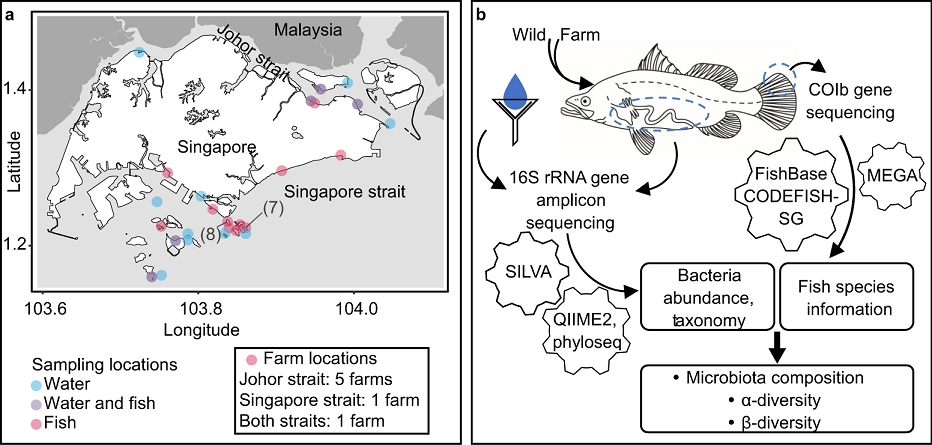
10. The Intestinal Digesta Microbiota of Tropical Marine Fish Is Largely Uncultured and Distinct From Surrounding Water Microbiota
Southeast Asia: Studying the gut microbes of marine fishes is an important part of conservation as many fish species are increasingly threatened by extinction. The gut microbiota of only a small fraction of the more than 32,000 known fish species has been investigated, although collective scientific knowledge of host-associated microbial communities, also termed microbiota, has substantially increased over the last two decades.
Fish are the most diverse vertebrate organisms and tropical marine waters have some of the richest diversity of fish, so in this study, the intestinal digesta microbiota composition of more than 50 different wild fish species from tropical waters were analysed. Results show that fish harbour intestinal microbiota distinct from that of the surrounding water and that location and domestication status are strongly associated with its composition. These findings highlight the urgent need to protect the microbiome associated with tropical marine hosts.
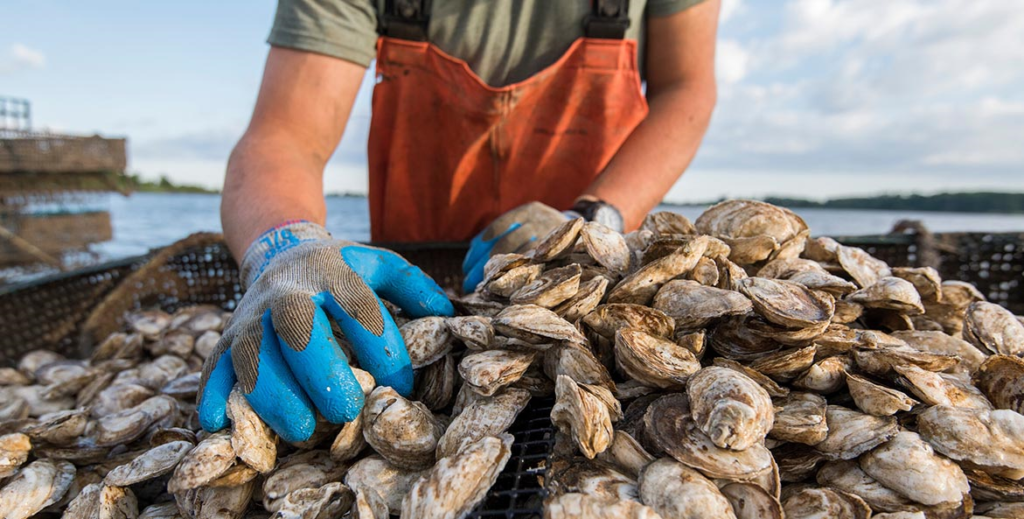
11. Oysters in the Chesapeake Bay Are on the Rebound: New Report Says They Can Help Fight Climate Change
Virginia: A report from the Chesapeake Bay Foundation says efforts to restore oyster populations could have benefits beyond just the survival of the species. Living shorelines that include oyster shell reefs are a natural approach to protecting shorelines from erosion. Healthy oyster reefs can also help protect the habitats that capture and store carbon. The report states that strong policies reduce shoreline hardening and incorporating oyster habitat can re-create “continuous, interconnected natural systems” that protect coastal areas against storms and erosion.
Oysters also filter sediment and algae from the water, increasing the clarity that is needed for Chesapeake Bay vegetation to receive enough sunlight. They also deposit nutrient-rich organic matter on the bottom that supports growth.Currently, the foundation reports that under the 2014 Chesapeake Bay Watershed Agreement, federal-state efforts are on track to fully restore 11 Chesapeake Bay tributaries for oyster habitat by 2025.
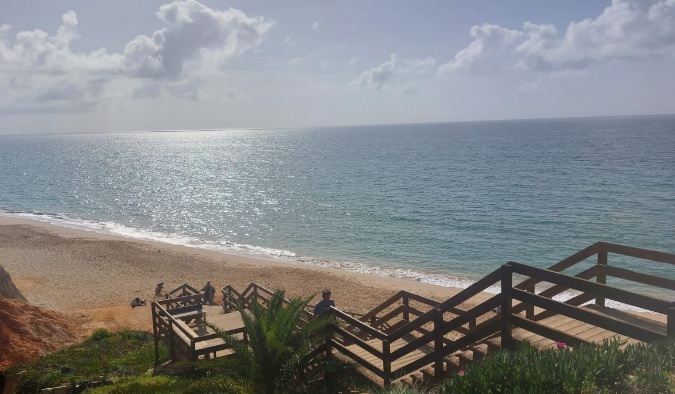
12. Environmentalists Want Maritime Affairs Ministry in Next Portuguese Government
Portugal: The Association for Marine Sciences and Cooperation called on the next government to create a ministry responsible for the governance of the sea, to protect Portugal’s marine ecosystems. The proposal includes the environmental organisation’s “Blue Manifesto”, which includes 14 measures Sciaena considers “priorities” for ocean conservation.
Equipping the national meteorological institute (“IPMA”) and research centres with human and financial resources, recognising the ocean as an ally against the climate crisis, approving the law creating a national network of Marine Protected Areas (“MPAs”), and developing/implementing a strategy for the transition to low-impact fishing are also included.
The Manifesto also calls for a moratorium on deep-sea mining, ratifying the High Seas Treaty, implementing measures to “effectively” reduce waste that pollutes the ocean, creating legislation to regulate maritime tourism activities, decarbonising the maritime transport sector, and ensuring that offshore renewable energy projects respect nature.
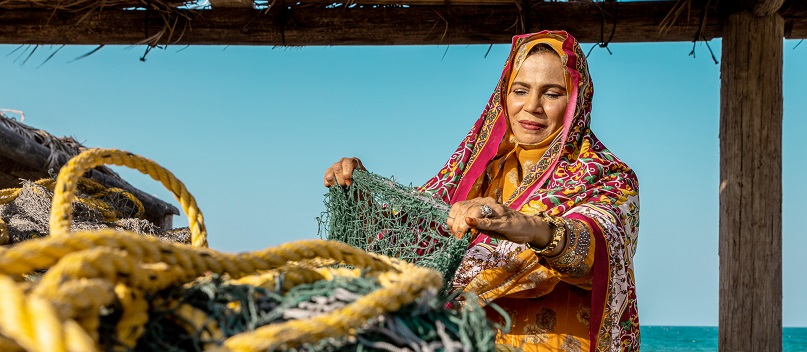
13. Evaluation of Fao’s Contribution to SDG 14: Conserve and Sustainably Use the Oceans, Seas and Marine Resources
Promoting the health and sustainable use of oceans, seas, and marine resources is critical to life and is the focus of Sustainable Development Goal 14 (SDG 14) and its ten targets. FAO is the custodian, co-custodian, or partner agency of seven of these targets’ indicators. In these roles, FAO builds on its long history of leadership in developing normative guidance and formulating and implementing projects in the areas covered by SDG 14 targets, such as sustainable fisheries.
This evaluation assesses the relevance, contribution, and leveraging of partnerships in FAO’s efforts to monitor and progress towards achieving SDG 14 targets and broader SDG 14 objectives. Findings show the relevance and contributions of FAO’s work, as well as areas to improve. The scope of the evaluation includes the setting of indicators and indicator methodologies, institutional arrangements within FAO, and partnerships at the national, regional, and global levels.

14. Reviving Marine Life: Georgia’s Latest Artificial Reef
United States: The Georgia Department of Natural Resources took a significant step forward in marine conservation by sinking a 50-foot sailboat, the ‘Guanahani Honey,’ to create an artificial reef. This event marks a pivotal moment in efforts to enhance marine habitats and provide a haven for divers and fishermen alike. The steel-hull vessel, kindly donated by St. Marys Boat Services, found its final resting place 16 miles offshore, after being meticulously cleaned to ensure it posed no environmental threats.
Concrete rubble, reef balls, and even decommissioned U.S. Army M-60 battle tanks share this underwater space, creating a complex, multi-layered habitat designed to mimic the complexity of a natural reef. These artificial reefs play a crucial role in marine conservation. By providing surfaces for coral to attach and grow, they help to rejuvenate fish populations and support a diverse array of marine life.
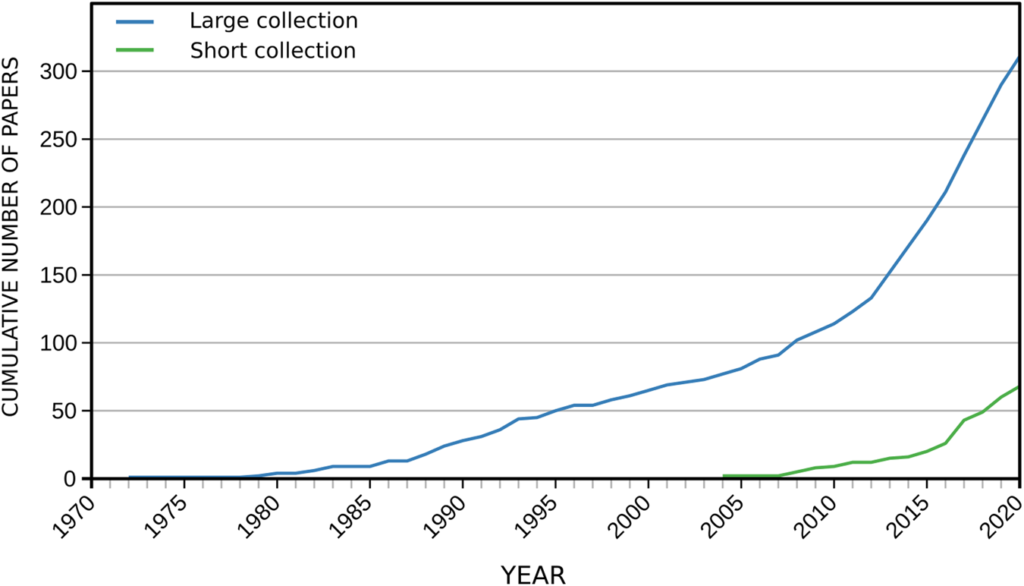
15. Two Decades of Research on Ocean Multi-Use: Achievements, Challenges, and the Need for Transdisciplinarity
This paper offers a comprehensive, analytical, and critically informed overview of the current state of ocean multi-use research. It delves into the origins, trajectory, and driving forces behind this emerging research field, all within the broader context of investigations addressing the management of increasingly diverse and intensifying activities at sea. In the 2010s, the European Commission embraced the idea of “multi-use” and provided funding for research programs to identify and promote synergies among maritime industries.
As a result, it formally recognized MU as a legitimate field of study and integrated it into its political agenda, primarily through the European Union Blue Growth Strategy. Studying systems combining different activities at sea requires crossing scientific disciplines and fields of study. Ocean multi-use research should be viewed within the context of a rich, extensive, and global scientific tradition centered on the management of maritime spaces.
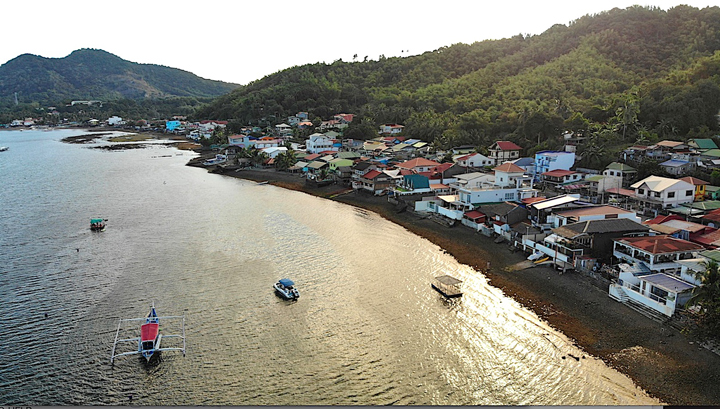
16. Saving Mabini, Batangas’s Coastal, Marine Ecosystem
Mabin, province of Batangas, Philippines, officially known as the Municipality of Mabini. Like other coastal towns in Batangas, Mabini’s coastal and marine ecosystems are threatened by unsustainable practices like solid waste, agriculture, and even beach tourism. In light of this, Mabini enacted Ordinance 031-2023, or the Mabini Integrated Coastal Management Code of 2023. The ordinance puts in place an integrated management framework to achieve food security and livelihood opportunities through fishery and tourism development, including the promotion of Marine Protected Areas (MPA) and solid waste management.
These are mitigating measures to reduce vulnerabilities to natural hazards, and impacts of climate change. The ordinance is anchored on the ridge-to-reef approach to conservation. This approach aims to provide a holistic intervention for protecting the coastal area by targeting environmental degradation in the uplands that impacts coastal ecosystems through sedimentation, by restoring the shoreline and protecting marine ecosystems.
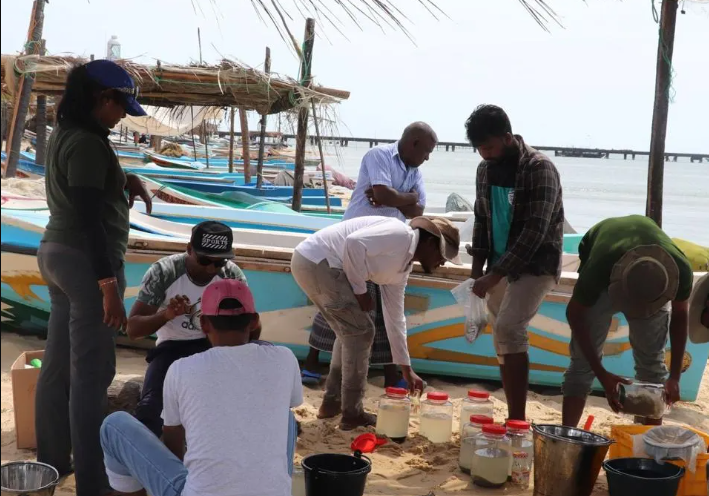
17. How Is Fishing Gear Hurting Precious Ecosystems in Sri Lanka & India?
Gulf of Mannar and Palk Bay between India and Sri Lanka: The Lanka Environment Fund says that marine litter from fisheries represents a major threat to marine environments in the Gulf of Mannar and the southern part of Palk Bay and is expected to keep getting more severe.
“Abandoned, lost and otherwise discarded fishing gear or ALDFG, is a persistent problem for a country with a reliance on its coastal fisheries for protein and its seafood industry,” they say, adding that these areas are important breeding and fishing ground for species including marine turtles and the dugong.
They found that abandoned or otherwise discarded fishing gear made up half of the litter items and nearly three-quarters of total litter weight on Indian shores, and 41% of items and 40% of the weight on Sri Lankan shores.

18. The Maritime Implications of Indonesia’s Presidential Election
Indonesia: The world’s third-largest democracy, and largest Muslim-majority nation, faced a crucial presidential election earlier this month with nearly 200 million people expected to vote, the nation’s maritime significance is underscored, as it is the world’s largest archipelagic state and the third-largest source of international seafarers. The presidential candidates, Joko Widodo (Jokowi), Prabowo Subianto, and Ganjar Pranowo, present diverse perspectives on maritime affairs. Jokowi, the incumbent president, introduced the Global Maritime Fulcrum concept, emphasizing maritime culture, resource conservation, infrastructure development, and defense capabilities.
Prabowo, current defense minister, focuses on continuity with Jokowi’s projects, pledging to modernize the military and strengthen border areas. Despite maritime issues not dominating Prabowo’s campaign, his background suggests an active stance on outward-looking affairs.The outcome will determine Indonesia’s trajectory in the maritime domain, impacting the global maritime dynamic. Results in the world’s largest single-day vote are not due for weeks.
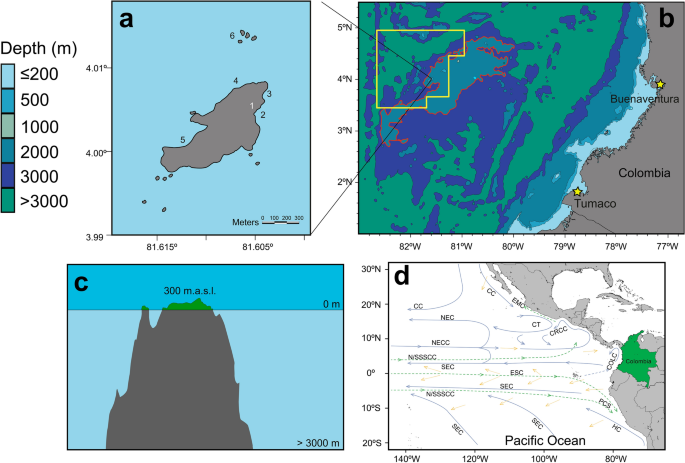
19. Marine Community Trophic Structure of Malpelo Island, Colombia From Stable Isotopes Approach
Malpelo Island, Colombia: Expanding knowledge of the trophodynamics of ecosystems improves the understanding of energy flow and interactions formed in food webs; therefore, structural knowledge of food webs helps to understand the ecosystem dynamics. This study describes the marine trophic structure of the largest marine protected area (MPA) of the Colombian Pacific on Malpelo Island, using δ13C and δ15N.
A total of 293 (38 groups/families) samples were collected and analyzed, being mostly represented by teleosts, followed by crustaceans, elasmobranchs, zooplankton, seabirds, and other functional groups. This study includes the first insights into the marine trophic structure of Malpelo Island and indicates some functional aspects of the entities that inhabit this ecosystem. This study fills information gaps for the MPA and constitutes an important tool to improve the elaboration of management and conservation measures based on the knowledge of the ecosystem function.
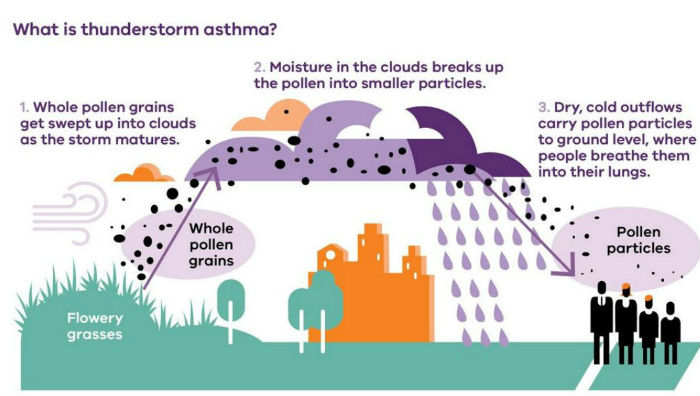
20. Thunderstorm Asthma and Climate Change
The medical journal JAMA published an article about an unprecedented weather event that occurred in 2016 in the city of Melbourne in Victoria, Australia. The event was “thunderstorm asthma,” defined as the sudden onset of asthma symptoms in a large number of people due to a rare interaction between specific types of thunderstorms and high airborne allergen levels. Within 30 hours of the event onset on November 21, 2016, the following impacts were seen in local hospitals:
A surge of people presented to an emergency department with acute respiratory symptoms; 476 asthma-related hospital admissions occurred, representing a 992% increase over the typical number; 35 people were admitted to an intensive care unit; and 10 deaths occurred. A key characteristic of this emergency was that while people were experiencing respiratory distress and seeking urgent medical care, the cause was uncertain and information was limited.

21. Biden Administration Weighs Slowing the Shift to Electric Vehicles
The Environmental Protection Agency is considering relaxing one of its most significant climate change rules — tailpipe emissions limits for cars and trucks — by giving automakers more time to boost sales of electric vehicles, according to two people familiar with the matter. Rather than mandating a rapid increase in electric vehicle (EV) sales in the coming years, the agency could delay these requirements until after 2030, the two people said.
The individuals spoke on the condition of anonymity because no final decision has been made; the rule will not be finalized until March at the earliest. The move comes as the Biden administration faces pressure on multiple fronts to weaken its electrification targets, in part because of slowing EV sales and also problems with public EV charging stations. Further, President Biden is attempting to balance two high-profile priorities: fighting climate change and championing labor rights.
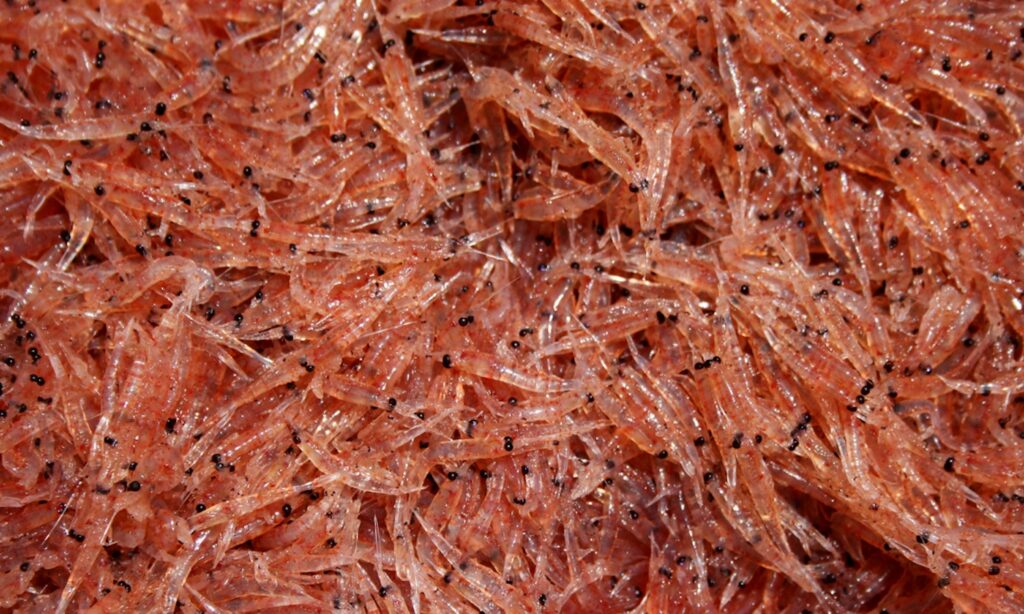
22. Krill Fishing Boom May Threaten Antarctic Predators and Climate Crisis Mediation
Antarctica: According to a recent report, Antarctic krill fishing has increased 400% over the past two decades. As the krill fishing industry expands across the aquaculture and pharmaceuticals industry, scientists express concerns that these sectors will decrease krill’s carbon sink capacity and create competition for krill’s natural predators. To address the challenge, quotas have been implemented and protective zones discussed.
However, harvesting krill impacts predators further up the food chain. Krill feed on phytoplankton, acquiring energy to make them a vital food resource for a number of predator species. Krill also consume phytoplankton that store carbon and release oxygen, and then excrete this carbon in tiny pellets that sink to the ocean floor. The Antarctic Wildlife Research Fund has raised more than 1.4 million US dollars to support research to protect the long-term health of the ecosystem in the Southern Ocean.

23. ‘High Seas Treaty’ Name Is Inaccurate and Should Include Biodiversity
A new ocean governance treaty, formally called the “Agreement under the United Nations Convention on the Law of the Sea on the conservation and sustainable use of marine biological diversity of areas beyond national jurisdiction” was agreed to by the international community in 2023. As the negotiations wound down, a rebranding effort began, which dubbed the new agreement the ‘High Seas Treaty,’ which is not accurate and omits the most important term, biodiversity.
In this editorial, the authors argue it’s not too late to re-think, re-frame, and re-name the agreement. Calling it the ‘High Seas Treaty’ was a choice, but there are better options, which are more accurate and do not bias the interpretation of the agreement. The authors believe the shorthand should contain the word biodiversity.
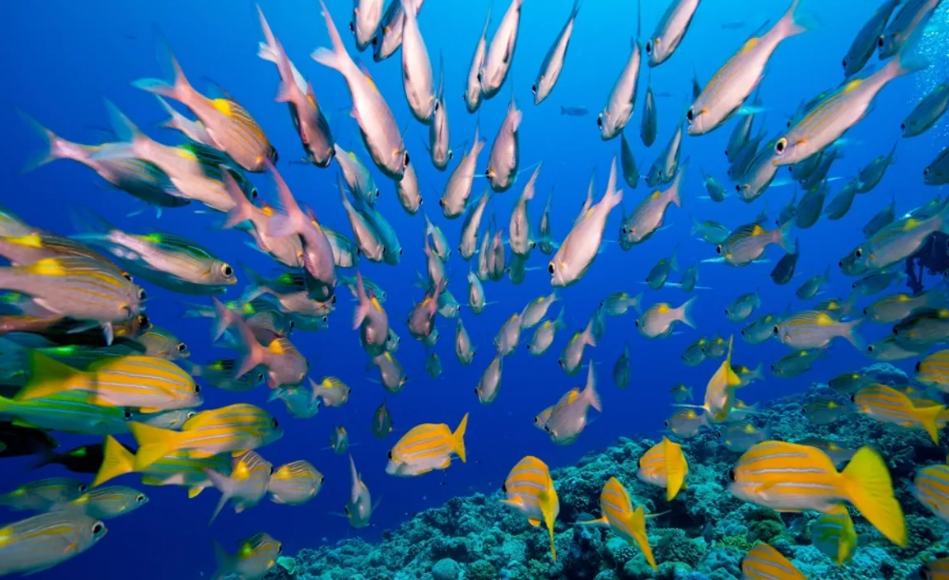
24. Revolutionizing Marine Biology: James Cook University Unveils Surprising Coral-Fish Relationship
Australia: Researchers challenge the belief that coral reefs are key to supporting fish populations, and their findings could reshape marine biodiversity understanding and conservation strategies. A groundbreaking study has turned the tide of conventional marine biology wisdom. Diving into over 4,600 reports, the team’s findings reveal a mere weak association between fishes and corals on a global scale. For example, despite the catastrophic losses in coral cover experienced worldwide, some fish populations have shown remarkable stability.
This suggests that factors other than coral presence are at play in influencing fish community compositions. The research emphasizes the necessity for a more nuanced appreciation of the complex interactions sustaining coral reef ecosystems, moving beyond the oversimplified equation of more coral equating to more fish. By understanding this, marine biologists and conservationists are provided with an opportunity to reframe conservation strategies.

25. Egypt Launches Blue Economy Roadmap to Advance Marine Conservation and Eco-Tourism
Egypt: With its extensive coastline, unique natural resources, and diverse ecosystems, this country holds immense potential for sustainable economic development in the marine sector. The Blue Economy Roadmap is tailored to Egypt’s priorities and strategic objectives and serves as a guiding document for promoting sustainable coastal and marine practices. It lays the foundation for fostering the blue economy — a concept that emphasizes the sustainable utilization of ocean resources while preserving marine ecosystems, and it signals Egypt’s commitment to advancing eco-tourism practices.
It will create millions of sustainable job opportunities through eco-tourism, fishing, and recreational activities, thus benefiting local communities and contributing to national prosperity. The Roadmap was developed in collaboration with the United Nations and the European Union. Aligned with Egypt’s 2030 Sustainable Development Strategy and the Ministry of Environment’s objectives, it focuses on sound natural resource management, pollution reduction, and ecosystem protection.
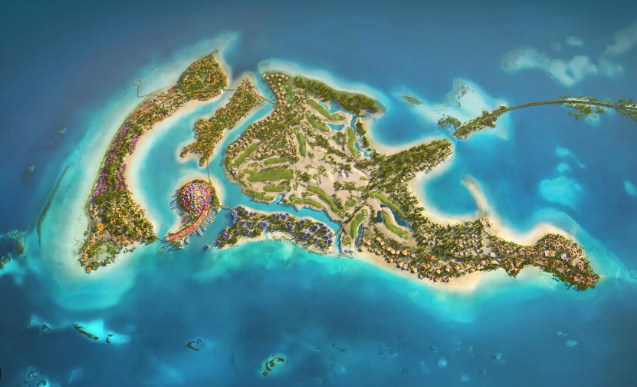
26. Saudi Wildlife Center, Ocean Regeneration Initiative Deal Aims to Protect Marine, Coastal Environment
Riyadh, Saudi Arabia, Saudi wildlife chiefs have signed an agreement to expand links with an ocean regeneration initiative aimed at protecting marine biodiversity and the coastal environment. Officials from the National Center for Wildlife, and the Wave initiative, inked a memorandum of understanding at the center’s headquarters to boost collaborative conservation efforts in the Kingdom.
Under the terms of the cooperation deal, they will work to maintain Saudi Arabia’s landscape and biodiversity, safeguard its surface water, restore balance in nature, ensure a greener future for generations to come, and support international efforts, while exploring possibilities for future joint actions. Princess Reema bint Bandar, the Saudi Ambassador to the US, notes that “marine environmental protection schemes involving Saudi Arabia were being run in line with UN Sustainable Development Goals, and Vision 2030 targets.”
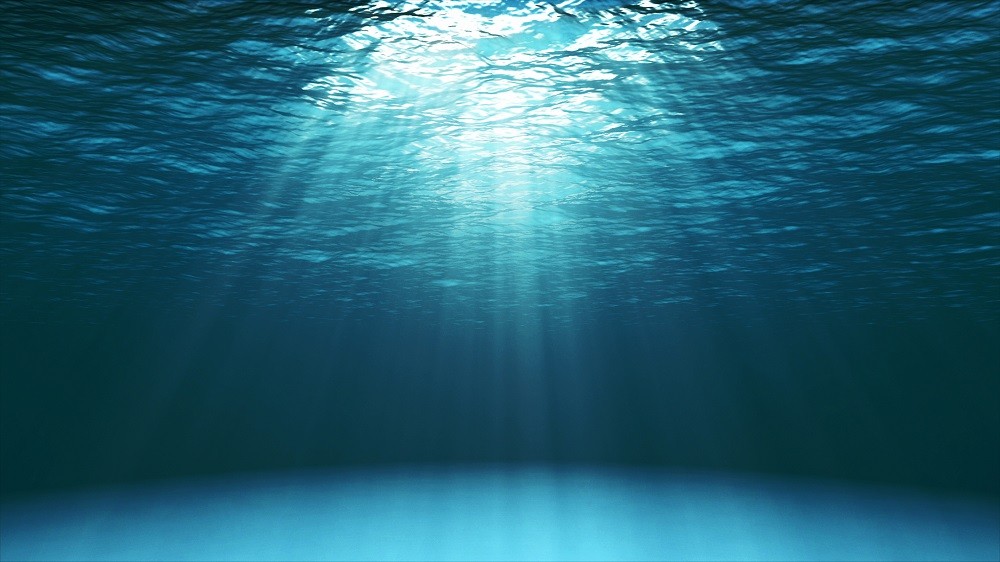
27. UK Gov Unveils New Environmental Science Network for Deep-Sea Mining
United Kingdom: Launched a new UK-based environmental science network, to gather scientific data, and carry out world-class research to help assess the environmental impacts of deep-sea mining. Eligible applicants can now apply to join the network and share their expertise to help fill the current evidence gaps in understanding the consequences of deep-sea mining on our ecosystems.
The network will work alongside the UK’s recent decision to support a moratorium on the granting of exploitation licences for deep sea mining projects by the International Seabed Authority (ISA). This means the UK will not sponsor or support licences until sufficient scientific evidence is available to assess the impacts of deep-sea mining activities on marine ecosystems and strong, enforceable environmental regulations, standards, and guidelines have been developed and adopted by the ISA.




